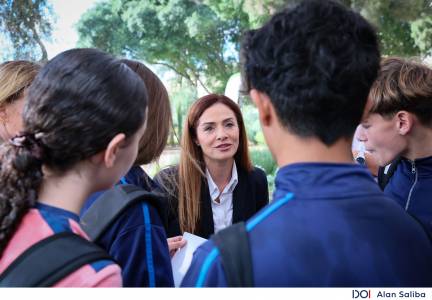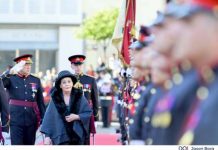St Paul’s Islands and Northern Cliffs receive highest level of protection
Secondary school students engage in educational session with the environment regulator
St Paul’s Islands (Selmunett) and the stretch of cliffs from iċ-Ċumnija to ix-Xaqqa have officially been declared Special Protection Areas (SPA), strengthening their existing status as Special Areas of Conservation (SAC). This upgraded status gives the two sites stronger legal safeguards to protect important wildlife, habitats and natural landscapes.
In total, this adds another 1.25 million square meters to the country’s list of Special Protection Areas — the size of about 175 football grounds.
This emerged during an educational session at Ġnien Spencer in Marsa with secondary school students, the Environment and Resources Authority (ERA), and the Minister for the Environment, Dr Miriam Dalli.
Through this designation, Malta is showing in practice its commitment to protect around 30% of the land under various environmental regulations.
During the session, the students engaged in different activities, learning how environmental protection works in practice and how it is implemented across the Maltese Islands to ensure that vulnerable species and habitats receive the attention and care they require.
“We are expanding our network of protected natural areas and strengthening safeguards for vulnerable species. The protection of these two sites contributes to our national biodiversity goals and aligns with our commitments under European and global sustainability frameworks,” the Minister stated.
Across Malta and Gozo, there are several types of protected natural areas, including Nature Reserves, Special Areas of Conservation (SAC), Special Protection Areas (SPA) and Sites of Scientific Importance (SSI). Each designation reflects the ecological value of the site and the level of protection required. The SPA status is one of the strongest forms of protection within the Natura 2000 network, providing enhanced legal safeguards and dedicated conservation measures.
Darrin Stevens, the Director for Environment & Resources within ERA noted that ERA remain committed to working closely with all relevant entities, NGOs and the public to ensure the effective implementation of these measures.
The decision to declare these two sites as SPAs follows scientific research by BirdLife Malta through the LIFE PanPuffinus project, which confirmed an important breeding population of the Yelkouan shearwater (il-garnija). This seabird is protected under Maltese and EU law. The new designation means that conservation actions focused on this species will now be formally incorporated into site management plans, supported by ongoing collaboration between ERA, environmental NGOs, research partners and local stakeholders.
During the education session, students from St Margaret College Ġużeppi Despott Secondary School (Verdala, Cospicua) and St Ġorġ Preca College Ħamrun Secondary School participated in interactive quizzes, case studies and role-play exercises exploring the importance of protected areas and the work being done to safeguard Malta’s natural heritage. The activities emphasised how evidence-based conservation, public participation and learning opportunities play a vital role in shaping a more sustainable future.
![]()








